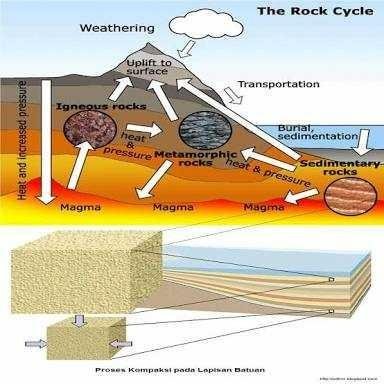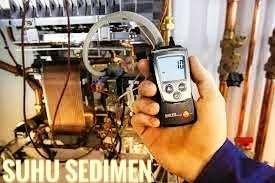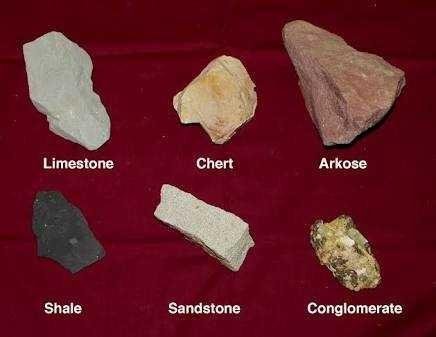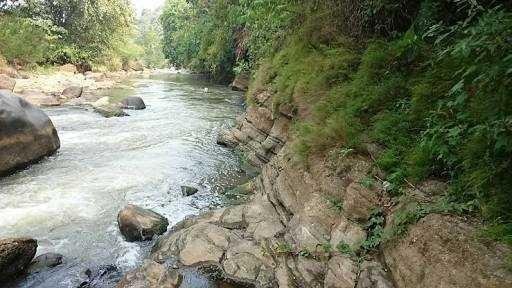Chemical and organic Sedimentary rock processes
- Sedimentary rocks are rocks that form corals because of the litification process of rock coral weathering and erosion that makes rocks and then gets carried away and deposited. Sedimentary rocks formed coral from igneous rocks that have weathered the area in a particular place that is done and then settles and becomes hard. Based on the formation process, sedimentary rocks are divided into 3 types, namely clastic sedimentary rocks, sedimentary rocks and chemical sediments. And on this occasion we will discuss about chemical sedimentary rocks.


Sedimentary rock from chemical igneous rocks is one type of sedimentary rock that needs to be said and formed due to the deposition process derived from igneous rocks weathering igneous rocks conducted from the rocks and caused by certain chemical elements. Some examples of certain chemical properties possessed by some of the components in question are open and closed air or water, where the two chemical components will make rocks surface rocks into fine, hard particles from smooth and hard formed rock surfaces and rough from the shape of a square sphere of reef rock.
If there is direct and continuous contact and in long term rock and time then the form of sedimentary rock will be formed in terms of plot it will be more so that the chemical properties of sedimentary rock this time will be different with the nature of the chemistry of the origin stone, this permanent segments occur due to changes in chemical properties caused by dissolution of chemicals and other mixtures. Most chemical sedimentary rocks are formed due to the erosion of salt-rich water and also the concentration of precipitation. In general, chemical sedimentary rocks are composed of salt salts dissolved in seawater as the following chemical elements: NaCl, KCl, MgSO4, CaCO3, CaCO4 and others.
A . Kinds of Formation Process
- As I have said and touched on the discussion that I have clearly in the above section that the sedimentary rock formed a smooth rectangle of chemically formed because the sedimentation process in the aids comes from weathering the rock bottom is done and caused by certain chemical elements of sedimentary rocks water and air for dryers of igneous rocks. This chemical sedimentation process occurs when the pores are filled and exposed when the fluid penetrates in the pores of sedimentary rocks. This is related to mineral reactions in rocks to the liquid used and in the entrance by rocks to form a chemical sedimentary rock. The chemical processes of sedimentary rock diagnosis include:

Dissolution - Dissolution is a process of dissolving minerals in sedimentary rocks which then form secondary porosity.
Cementation - Cementation is the change and process of mineral deposition which is the cement and igneous rock of sedimentary rock, the cement will be deposited during primary process or secondary process. From the chemistry of sedimentary rock formats
Authigenesis - Authigenesis is the process of the emergence of new mineral materials in the process of being done and growing in the pores of chemical sedimentary rocks.
Recrystallization - Recrystallization is the process of changing the crystal structure, but the mineral composition remains the same. The minerals that are usually crystallized are calcite.
Replacement - Replacement is the process of dissolving a mineral liquid material which then has a form of process of other mineral material that is formed and replaces the minerals that are marinated earlier in chemical drugs to become sedimentary rocks in water and rock chemistry.
Compaction - Compaction is the process of pumping the grains of sedimentary rock into the pores of rocks to help the rocks become smooth and easy to check and smooth becomes easy for chemistry.
Bioturbation - Bioturbation or bioturbation is the process of sedimentation of sedimentary rocks into chemical sedimentary rocks caused by living things that are chemically synthetic.
The process of sedimentation of rocks into sedimentary rocks in the form of chemical triangles there is called diagenesis. Diagenesis is the process of converting sedimentary rocks into different sedimentary rocks in igneous and fine rocks through chemical processes and in litification at elevated temperatures and pressures less than required at the time of pore temperature and pore rocks sidimen and metamorphic rock formation. The stages of diagenesis are:

Eoldiagensis - Eoldiagenesis is the initial stage of sediment deposition, where there will be loading that will cause the compaction on each layer of sediment. At this stage the compaction process is very dominating.
Mesodiagenesis = Early Diagenesis is the process of removal of water and rock minerals from the existing pores of sedimentary rock in a fine-shaped chemical process.
Laterydiagenesis - Laterydiagenesis is a process of stages of the process of chemical sedimentary rocks of mesodiagenesis that has passed the processing stage of eoldiagenesis. At this stage a strong compaction will collaborate with the burial process that will cause the temperature and pressure to rise so that trigger the occurrence of dissolution, dissolution is very dangerous and the temperature becomes not maximal and dominate in this process. Up to this process can be categorized as the process of earlydiagenesis. If there has been a process of dissolution and burials are still going to occur there will occur cementation around the grains of sediment which then this is called the process of laterydiagenesis. If the compaction occurs continuously and the temperature reaches 150 degrees Celsius then the process of diagenesis will stop and will be replaced by metamorfise process.
Telodiagenesis - is the final stages of sedimentary rock and after it occurs in the mesodiagenesis phase of the rapture phase. At this stage of the existence of various types of water will affect the composition of the chemical composition of a rock so that sedimentary rock becomes the most likely to occur authigenesis process or new mineral filling process on the pores of sedimentary rocks in the direct process.

A .
Oolit - Oolit is a type of sedimentary rock consisting of a collection of small and fine grains of diameter between 0.5-10 mm which occurs due to the process of precipitation, deposition of the entire core of chemical rocks. Oolit is a chemical sedimentary rock that occurs when the water moves very fast and the waves are very high. And there are several types of rocks that enter in this type of oolit include oolit lime, oolit iron and oolit are pesilit. From the others in the chemical sedimentary rocks are formed small and very fine in the process of checking.
B .
Limestone - Limestone or limestone is a type of chemical rock that we often find in everyday life that can be used as raw materials in the manufacture of cement. Limestone is a limestone consisting of calcite (CaCO3) which is crystalline, indicating that this rock is derived from chemical deposits. The various limestones include: Chalk or limestone rock is a rock consisting of fragments of animals framed lime and also from plants, Mergel is a limestone rock consisting of a mixture of CaCO3 with sand and clay (read: Tanah Mergel ), Dolomite is a limestone rock formed from harder limestone so that the chemical formula is CaMg (CO3) 2 and Travertin is sedimentary rock derived from limestone deposits on the land that occurs due to springs containing a lot of limestone.

C .
Kitchen Salt - Kitchen salt or NaCl is the result of freezing sea water that is done in the waters terpencir and often we consume in everyday life. To form this salt precipitate it must be done in areas that have a dry climate and have a separate curvature of the free ocean to get salt minerals to be formed salt kitchen spheres that are dried on the scorching surface of the sun and dry quickly the salt of the kitchen.
Upvote and follow me and Resteem
@petrixsteem